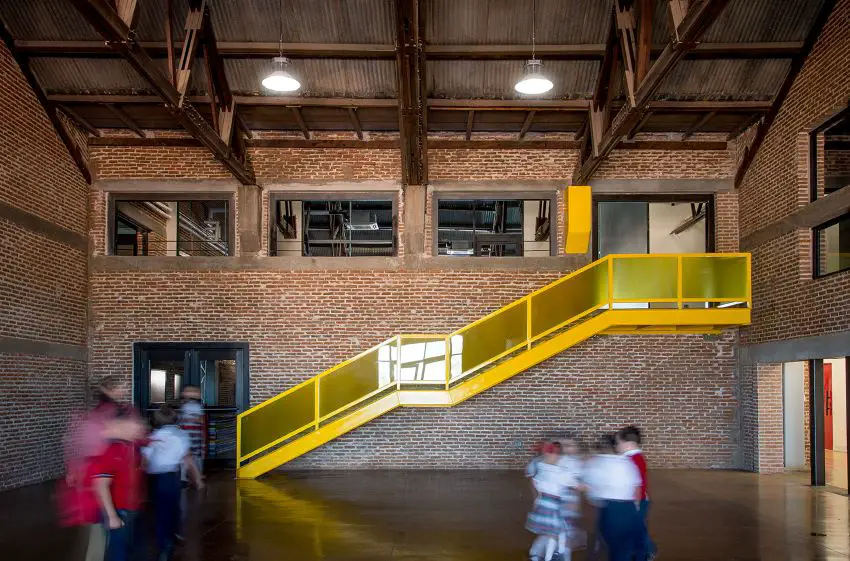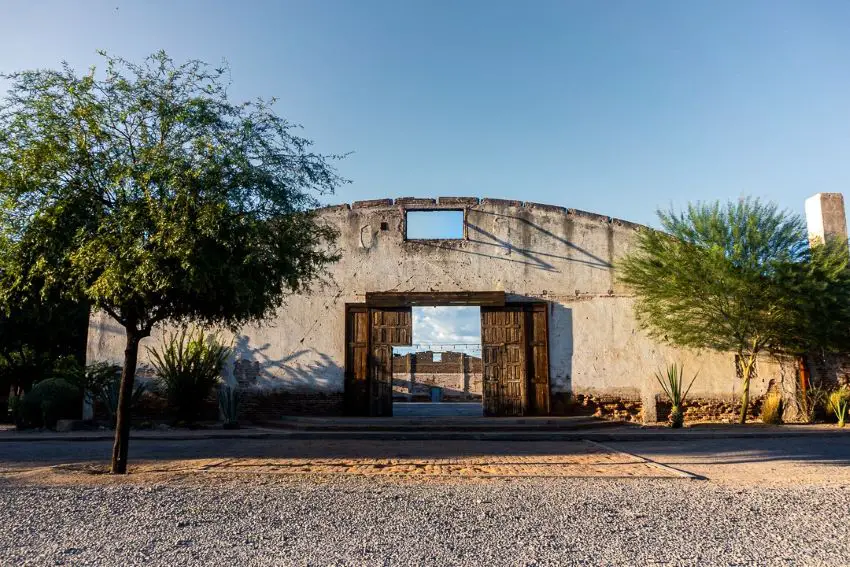The state of Sonora, best known for its striking landscapes, has been muse to many an architect. The region is traversed by majestic mountain ranges, including the Sierra Madre Occidental and its central sierras, while also boasting a vast desert and the stunning Sea of Cortez, renowned for its unique wildlife, including various species of whales.
In addition to Sonora’s natural beauty, its rich history also serves as a profound source of inspiration for architectural creation. Old factories, disused warehouses and former prisons provide a canvas on which architects can freely express their creativity.
Follow along for our selection of some of the most original examples of new architecture in Sonora.
Architecture in Sonora: a conversation between the Colonial and the Contemporary
Sonora House

This residence resembles something out of a fantasy world, showing off a Tim Burton-esque flair while also paying homage to the styles of Mexican architects Luis Barragán and Ricardo Legorreta. The house has gained fame for its originality and its story is equally extraordinary.
Commissioned by a Mexican family, Russian architects Davit and Mary Jilavyan crafted this creation in the heart of the Sonoran Desert. Over time, the family stepped back from the project, allowing the architects to pursue their vision freely. Its garden, featuring cacti and biznagas, along with irregular windows and enchanting nighttime illumination, creates a perfect blend of surrealism and a lucid dream come to life.
Colegio San José

A pair of 1950s warehouses pay homage to the grandeur of ancient cellars while intelligently integrating modernity and its technology. Designed by Carte Architects, this space houses the Colegio San José, an educational institution that champions architecture and innovation in Sonora.
Sustainability is central to the Colegio San José’s design, which includes solar panels for generating electricity, a greywater treatment system for irrigating the school’s gardens and strategically placed roofing for solar protection.
Bar del Parque La Ruina

This establishment has rapidly become an architectural landmark in Sonora. Located in Hermosillo, the state capital, an old textile factory has been revitalized and transformed into a contemporary bar that serves as a hub for events, nightlife and gastronomy.
A standout feature of La Ruina is its open spaces, which provide views of the sky while preserving the original walls. The design is unique, featuring a marble roof that stretches from wall to wall and aged mirrors framed in wood salvaged from the old factory.
Museo Regional de Sonora

A former prison inaugurated in 1908 now houses the Museo de Sonora, one of the state’s most significant cultural institutions. The building underwent careful restoration in 1982 by the National Institute of Anthropology and History (INAH), which has preserved much of the original architecture while providing contemporary restoration elsewhere.
Today, the museum boasts 18 permanent exhibition rooms, five temporary exhibition rooms and a 130-seat auditorium with 130. Its beautiful stone facade and main hall, which features a glass ceiling, harmoniously blend modern additions with the original architecture.
Museo de Arte de Sonora

Inaugurated in 2009, the 5,000-square-meter building that houses the Sonora Museum of Art (MUSAS) stands as one of the state’s most complete cultural spaces. It includes spacious circulation areas, courtyards, warehouses, workshops, as well as office and residential spaces and six impressive exhibition halls.
One of its main aesthetic features is the facade, adorned with polymer concrete panels and large transparent windows that create a striking contrast; its curvilinear shape is yet another distinctive element.
Museum and Library of the University of Sonora

Though this Hermosillo building dates back to 1948, its design is as fresh now as it ever was. It is currently the most photographed monument in the city, thanks to its Soviet-inspired architectural style, which also incorporates elements of traditional Arabic-Spanish design. One side of the building reflects functionalist architecture, while the interiors are elegant, showcasing touches of Art Nouveau. This structure is truly a gem.
Ana Paula de la Torre is a Mexican journalist and collaborator for various outlets including Milenio, Animal Político, Vice, Newsweek en Español, Televisa and Mexico News Daily.
